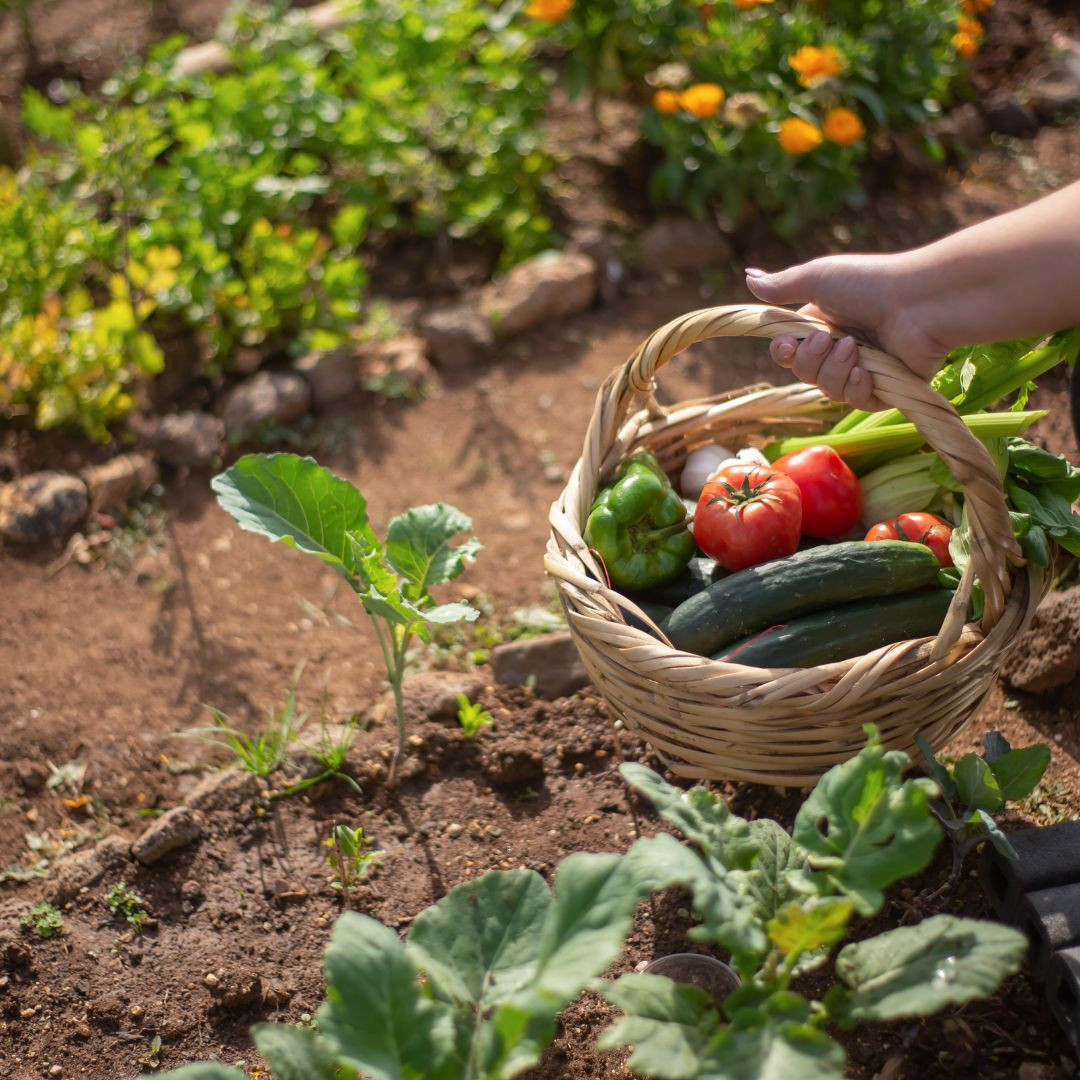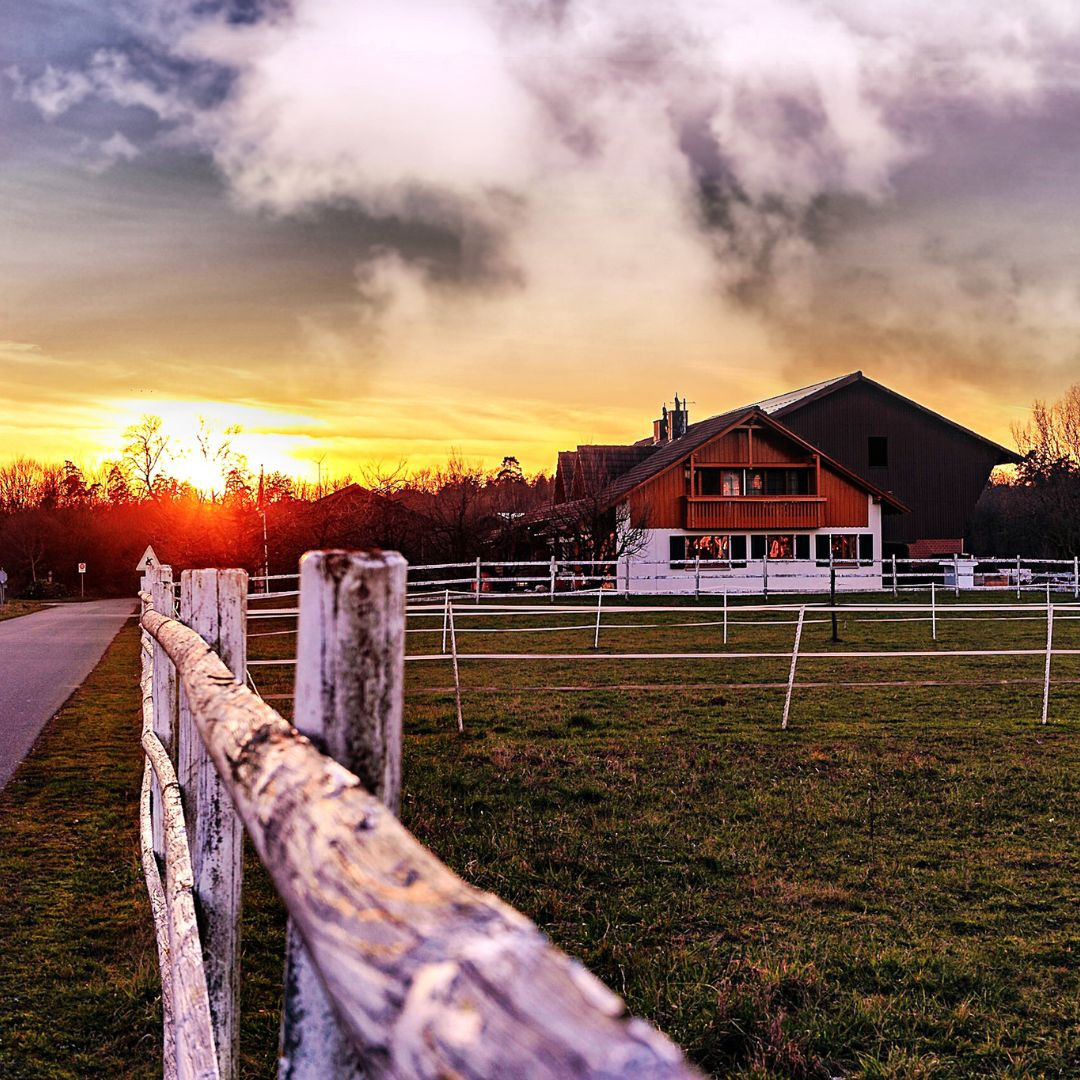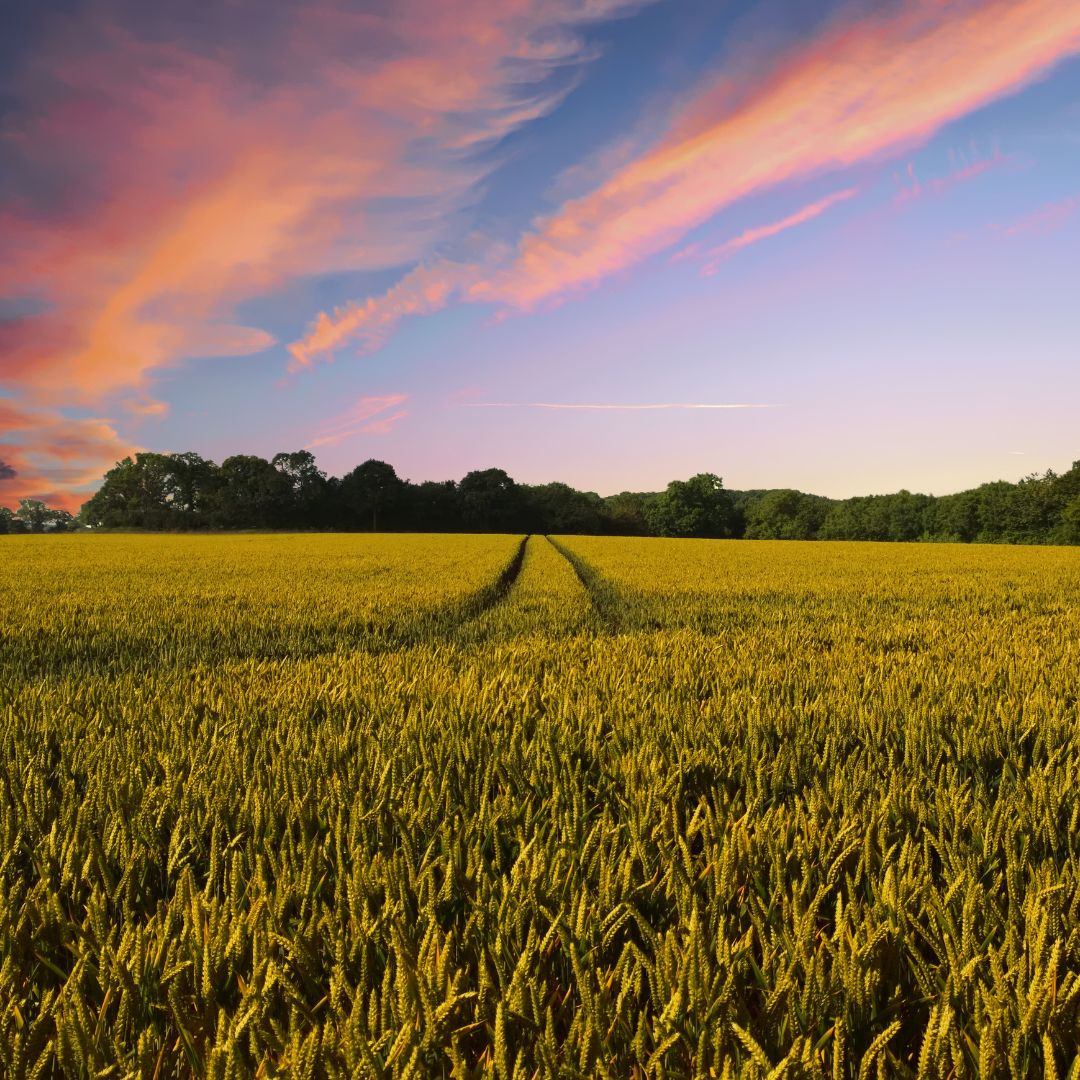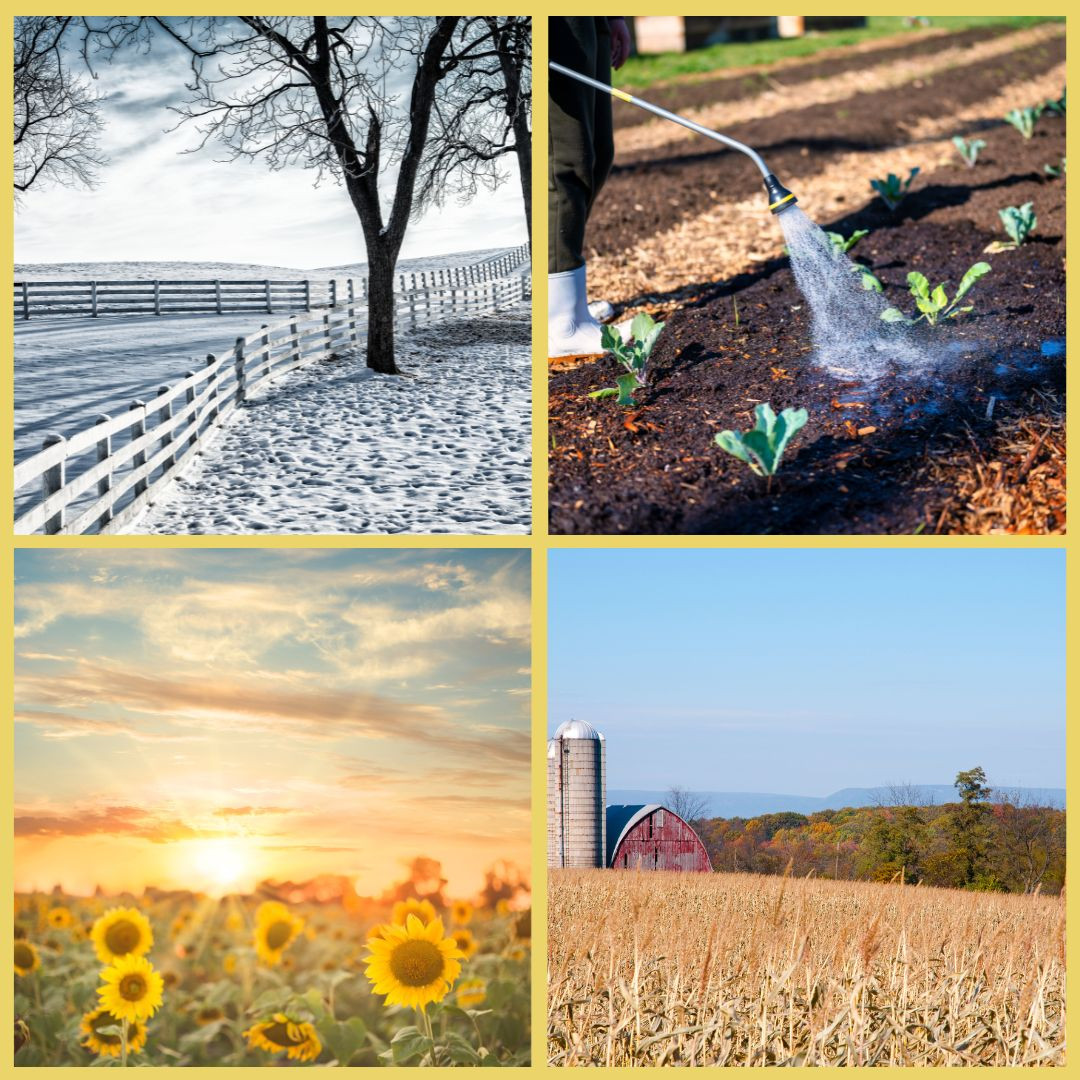
This post may contain affiliate links, which means that I may receive a commission if you make a purchase using these links, with NO additional cost to you.
Mature beef cows, as low maintenance as they are, still have a few common problems foot abscess, mastitis, and bloat. The good news is that these are easily identified and can be quick to treat.
First up, foot abscess. At first this is not apparent to identify. As you are checking cows, you will notice one is lame. Upon further investigation you will notice it is in the hoof area. If you can safely assess the foot, usually in a chute, you will notice the hoof is hot.
A common time for foot abscess to usually appear is a few days to a week after cows are worked or moved through an area with hard surfaces (like concrete or rock). This is because a cow my move to fast and slip on the concrete, creating a surface burn on their hoof. Later bacteria enter the hoof and an abscess form.
Treating a foot abscess usually requires antibiotics, unless you can have the cow calmly stand in a foot soak every day for 20-30 minutes for a week or so. Check with your local veterinarian for the best treatment option to use in your area.
The second common problem in beef cows is mastitis. Mastitis happens when bacteria enter the udder, usually from a teat that is open when a cow lays down in a dirty area.
To identify mastitis, you will notice the infected quarter not being milked as well by the calf. When you feel that quarter it will feel hot compared to the other quarters. The cow will be running a fever as well. It is important to treat mastitis quickly, as it can spread to the rest of the cow, causing her to go septic and then die.
Working with your local veterinarian will give you the best results. Many historical treatments are no longer available over the counter due to new drug laws.
Bloats are not as common in mature cows as they are in feedlot animals, but it can still happen. Usually this happens when a cow consumes forage that is higher in legumes than they are used to. Example a cow is grazing on native range but sees that delicious alfalfa field and breaks through the fence to graze a little treat. She gets too much gas built up in her rumen and cannot belch it out fast enough. Legumes typically cause what is cause frothy bloat, where a froth layer develops over the esophagus and the cow is unable to belch.
Bloating is quickly identified, just driving by slowly. The left side of the cow will be raised higher and look like a giant balloon compared to the other side. To treat a bloat, you will need to quietly and calmly move her to a containment area, where you can safely restrain her, so she cannot move, i.e. a chute or two strong panels.
You must move calmly and keep the cow calm. A bloated cow is not able to breathe as effectively. If the cow is laying down, try and get her up. If she cannot get up, you’ll have to try and pass the tube with her laying down. Be ready to move out of her way.
You will need a hose 5 feet long and a metal tube 12 inches long to go around the hose and keep her from biting the hose. You can buy a hose specifically for bloating which is very handy. A garden hose will work in a pinch. Insert the hose into the right side of the cow’s mouth towards the left side. Gently pass the hose down the esophagus, if you go slow enough you can feel the cow swallow it.
Listen carefully to the hose, if you are unsure if you are in the esophagus or windpipe. You will hear the breath through the hose if you are in the wrong tube. Once the hose reaches the rumen, you will hear and feel a rush of air. It will stink but do NOT light any flame. You are releasing methane and it will catch on fire. In the case of frothy bloat, once all the methane is released (no more air will be coming out of the tube), you will want to pour a bloat treatment down the tube to keep her from rebloating right away.
Having cows is a joy, but make sure you are equipped to take care of the common problems beef cows can have.
As I've grown in my journey as an entrepreneur, mom, gardener, and livestock owner, I struggled to find a planner that met my needs and kept me organized. So, I MADE MY OWN. You can look at it on the link below and buy it on amazon below.
Don't want the whole calendar part? I got you! I pulled the gardening and animal care pages out and put them in a book all their own.
Wanting a community to lean into? Join the FREE Helping Your Family Homestead for Food group! This community is for the Mommas, looking to stay home and raise their kids, but unsure how to keep everyone fed and make ends meet. I share tips from my journey from the office to half the income and feeding my family from home, while maintaining good nourishing food. Tips include gardening, bulk buying, caning/preserving, livestock, homesteading, and home remedies. Your family is precious, and this group is to help you gain the knowledge and tools to keep your family well and not reliant on outside professionals. Remedies and tips are easy and simple for the busy momma, time is precious after all, including pregnancy, birth, young kids, and illness. Trust your Momma gut again! This community offers the resources + community you need to help get started on your journey and prepare for whatever future you envision.
Starting to garden doesn't have to be hard! I gathered all the tips I've learned over my gardening learning curve and made them into a simple course to jump start your gardening your life.
Supporting Your Family Naturally from the Inside Out community!! This community is for Mommas, looking to Support Your Family from Nature for Wellness. Tips range from nutrition, herbals, detoxing, natural cleaning, and essential oils. Basically, all the things I’ve learned slowly over the past 5+ years of my journey. We have moved off Facebook, to better serve our community and be able to discuss openly options for providing for your family in the best way possible.
Join the FREE Community
Join the FREE Community
I've had 3 very different pregnancies. After the first traumatic birth, I learned better and how to care for my body naturally and prevent common pregnancy and birth problems before they arise. This quick course will get you the tools you need to have a naturally healthy pregnancy, labor, and delivery. My first pregnancy I had a normal western medicine all the things pregnancy. My second? I flipped to completely natural, no medicine. Bonus: Preventing Preeclampsia Without the Aspirin & Healing from Birth Trauma
Click here to get the stories straight to your email:
For more on wellness tips click here:
For more on homesteading on your budget click here:
For more simple DIY updates click here:
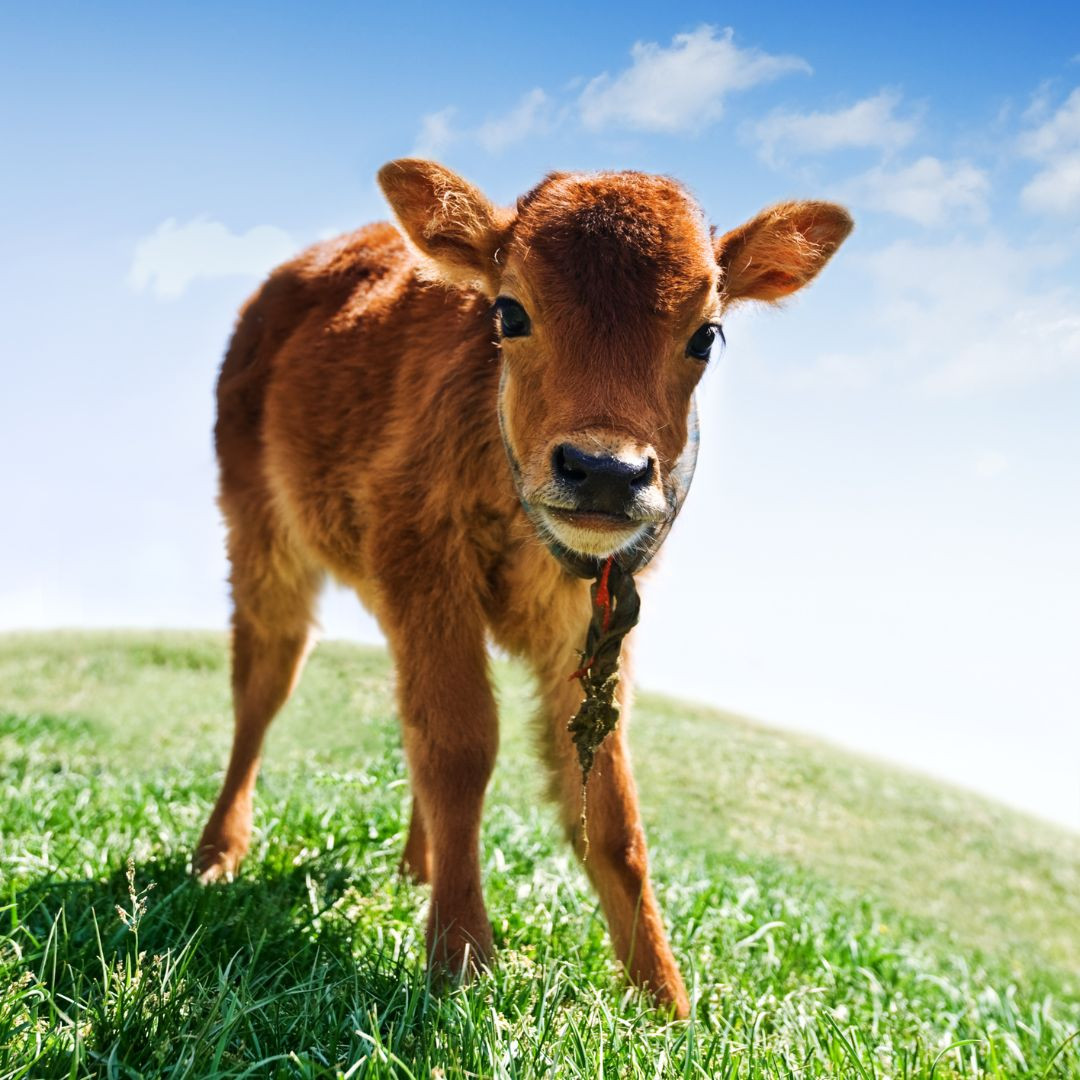
This post may contain affiliate links, which means that I may receive a commission if you make a purchase using these links, with NO additional cost to you.
Calves are a highlight of the spring here. The new babies bouncing around, the fuzzy ears, and the cuddly bottle calves. However, sometimes those babies have problems. Below are some of the common symptoms of chill, scours, and pneumonia, and how to treat them.
The first big problem is weak or cold calves. This happens most frequently at birth, when it is cold. The calf just left a cozy warm place of 101.5 degrees and is now laying on the ground where it is freezing, and he’s wet. Now this doesn’t happen with every calf. Most of the time, they may be cool after birth, even in the cold weather, but if mom gets them cleaned up and they get warm milk, they will be just fine. God designed them beautifully to keep themselves warm.
So, what does a cold calf look like? A cold calf is usually curled up in a ball, possibly shivering or wet, and they don’t jump up and run when you approach. If you stick your finger in their mouth, their mouth will feel cold.
If the calf has a cold mouth but is not shivering, they are on the verge of hypothermia. A calf stretched out in the cold is a big red flag. They are hypothermic and need a hot bath. Often these calves will have eyes open and white. Their breath is slow, and their heart beat weak.
Pick cold calves up and get them warmed up by bringing them to a warm place. Slightly chilled calves go to our wood shop and hang out in old comforters in front of the heater. If you’re checking with a pickup in a big area, you can put the calf in the passenger seat and turn the heater on high directed at them. By the time you’re done with the rounds, you can find his mom and drop him back off. Make sure he gets some milk before you leave.
Hypothermic or almost hypothermic calves come to my house and get spa treatment. Bathroom heater on high, hot tub, and the blow dryer. Sometimes another heater too. Basically, that room starts to feel like a sauna. These calves, I like to get warm milk or colostrum in these calves before sending them back to mom once they are warmed up and walking again. For bottling tips check out the blog Starting Bottle Babies.
Another common problem with calves is scours. This can happen in bottle calves and calves on the cow. However, there are two very different types. One must be treated, or the calf could die. The other is usually self-correcting.
Scours looks like pale greyish-brown diarrhea. When assessing if it needs treated or not, you will need to use your nose. Milk scours happens usually after a storm. The calves bedded down before the storm and didn’t nurse for a while. Once the storm passed, they found mom and tanked up. These calves will have a bit of grey-brown poop on their butt and will act just fine and have a normal poop smell.
The other scours that needs treated are caused by E.Coli. These calves will be lethargic, with dull eyes and droopy ears. They may have grey-brown poop smeared on their butt and sides. They don’t get up and bounce around and they will have a very distinct stink to them. Once you smell it once, you will never forget it. There are different strains that will cause scours and it is best to contact your local veterinarian. They will know what strains are common in the area and what is the best way to treat it quickly.
The final common problem that happens with calves is pneumonia. These calves will be head down typically, breathing hard, snot dripping, eyes dull and ears drooping. When you check their temperature, you will find a fever. Here’s the thing with pneumonia, there are different causes.
When it is super dry, pneumonia can be from dust, even on pasture. Others can be caused by bacteria or virus strains. This is another one, working with your local veterinarian is going to be best here. They will have the knowledge of the different strains going around and which antibiotic or treatment will quickly take them out.
Calves, like all babies, can still get sick. Having the knowledge and tools to quickly diagnose and treat them will result in a better prognosis and outcome.
As I've grown in my journey as an entrepreneur, mom, gardener, and livestock owner, I struggled to find a planner that met my needs and kept me organized. So, I MADE MY OWN. You can look at it on the link below and buy it on amazon below.
Don't want the whole calendar part? I got you! I pulled the gardening and animal care pages out and put them in a book all their own.
Wanting a community to lean into? Join the FREE Helping Your Family Homestead for Food group! This community is for the Mommas, looking to stay home and raise their kids, but unsure how to keep everyone fed and make ends meet. I share tips from my journey from the office to half the income and feeding my family from home, while maintaining good nourishing food. Tips include gardening, bulk buying, caning/preserving, livestock, homesteading, and home remedies. Your family is precious, and this group is to help you gain the knowledge and tools to keep your family well and not reliant on outside professionals. Remedies and tips are easy and simple for the busy momma, time is precious after all, including pregnancy, birth, young kids, and illness. Trust your Momma gut again! This community offers the resources + community you need to help get started on your journey and prepare for whatever future you envision.
Starting to garden doesn't have to be hard! I gathered all the tips I've learned over my gardening learning curve and made them into a simple course to jump start your gardening your life.
Supporting Your Family Naturally from the Inside Out community!! This community is for Mommas, looking to Support Your Family from Nature for Wellness. Tips range from nutrition, herbals, detoxing, natural cleaning, and essential oils. Basically, all the things I’ve learned slowly over the past 5+ years of my journey. We have moved off Facebook, to better serve our community and be able to discuss openly options for providing for your family in the best way possible.
Join the FREE Community
Join the FREE Community
I've had 3 very different pregnancies. After the first traumatic birth, I learned better and how to care for my body naturally and prevent common pregnancy and birth problems before they arise. This quick course will get you the tools you need to have a naturally healthy pregnancy, labor, and delivery. My first pregnancy I had a normal western medicine all the things pregnancy. My second? I flipped to completely natural, no medicine. Bonus: Preventing Preeclampsia Without the Aspirin & Healing from Birth Trauma
Click here to get the stories straight to your email:
For more on wellness tips click here:
For more on homesteading on your budget click here:
For more simple DIY updates click here:
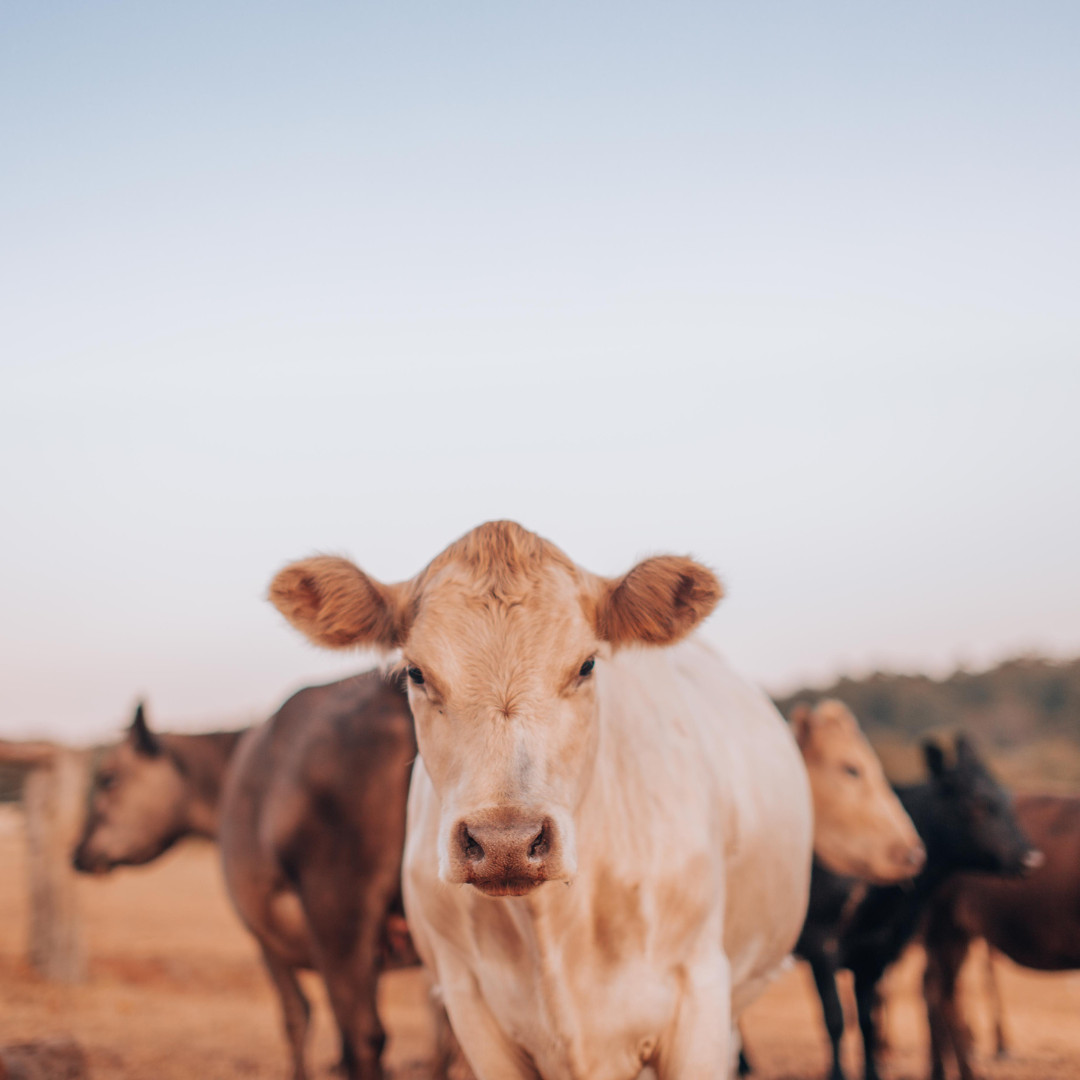
This post may contain affiliate links, which means that I may receive a commission if you make a purchase using these links, with NO additional cost to you.
A cow may not be the first animal to be added to your homestead, but at some point, many do. Cows bring so much to the homestead, it’s hard to not add one eventually. There are a few major differences in breeds to consider when selecting your cows. The biggest difference to consider is your desire for beef or milk. Environment is another factor to consider.
As with any other domesticated animal, humans have selected cattle primarily for beef or milk traits. There are a few breeds that still have both traits and are considered dual purpose.
In general beef breeds are good at growing muscle quickly but not necessarily good at producing extra milk. They produce enough for their calf, but that’s about it. The most popular breeds are Angus, Limousin, Herford, Simmental, Gelbvieh, and Charolais.
Cows considered dairy breeds have been selected for producing milk. They tend to be a little slower growing but can still be used for beef. Popular breeds for milking cows are the Holstein, Brown Swiss, Jersey, and Guernsey. To get milk, the cow must have a calf, so many homesteaders will grow the calf for their own beef, knowing it will take a bit longer.
The few dual purpose breeds still have variations with in the breed. Make sure you check when purchasing how the animal has been selected. Popular dual purpose breeds are the Shorthorn and Dexter.
Another factor to consider is your environment. If you live in a hot and dry environment, you want to make sure you have a cow that can handle the environment. There are breeds that are better suited for heat like the Brahman. There are some breeds that are better suited for poor range as well, like the Corrientes and Longhorn.
Having a cow on the homestead is very rewarding, either a beef or dairy cow. They bring a lot to the homestead for food for your family. Happy selecting!
As I've grown in my journey as an entrepreneur, mom, gardener, and livestock owner, I struggled to find a planner that met my needs and kept me organized. So, I MADE MY OWN. You can take a look at it on the link below and buy it on amazon below.
Don't want the whole calendar part? I got you! I pulled the gardening and animal care pages out and put them in a book all their own.
Wanting a community to lean into? Join the FREE Helping Your Family Homestead for Food group! This community is for the Mommas, looking to stay home and raise their kids, but unsure how to keep everyone fed and make ends meet. I share tips from my journey from the office, to half the income and feeding my family from home, while maintaining good nourishing food. Tips include: gardening, bulk buying, caning,/preserving, livestock, homesteading, and home remedies. Your family is precious and this group is to help you gain the knowledge and tools to keep your family well and not reliant on outside professionals. Remedies and tips are easy and simple for the busy momma, time is precious after all, including pregnancy, birth, young kids, and illness. Trust your Momma gut again! This community offers the resources + community you need to help get started on your journey and prepare for whatever future you envision.
Starting to garden doesn't have to be hard! I gathered all the tips I've learned over my gardening learning curve and made them into a simple course to jump start your gardening your life.
Supporting Your Family Naturally From the Inside Out community!! This community is for the Mommas, looking to Support Your Family from Nature for Wellness. Tips range from nutrition, herbals, detoxing, natural cleaning, and essential oils. Basically all the things I’ve learned slowly over the past 5+ years if my journey. We have moved off Facebook, so to better serve our community and be able to discuss openly option for providing for your family in the best way possible.
Join the FREE Community
Join the FREE Community
I've had 3 very different pregnancies. After the first traumatic birth, I learned better and how to care for my body naturally and prevent common pregnancy and birth problems before they arise. This quick course will get you the tools you need to have a naturally healthy pregnancy, labor, and delivery. My first pregnancy I had a normal western medicine all the things pregnancy. My second? I flipped to completely natural, no medicine. Bonus: Preventing Preeclampsia Without the Aspirin & Healing from Birth Trauma
Click here to get the stories straight to your email:
For more on wellness tips click here:
For more on homesteading on your budget click here:
For more simple DIY updates click here:
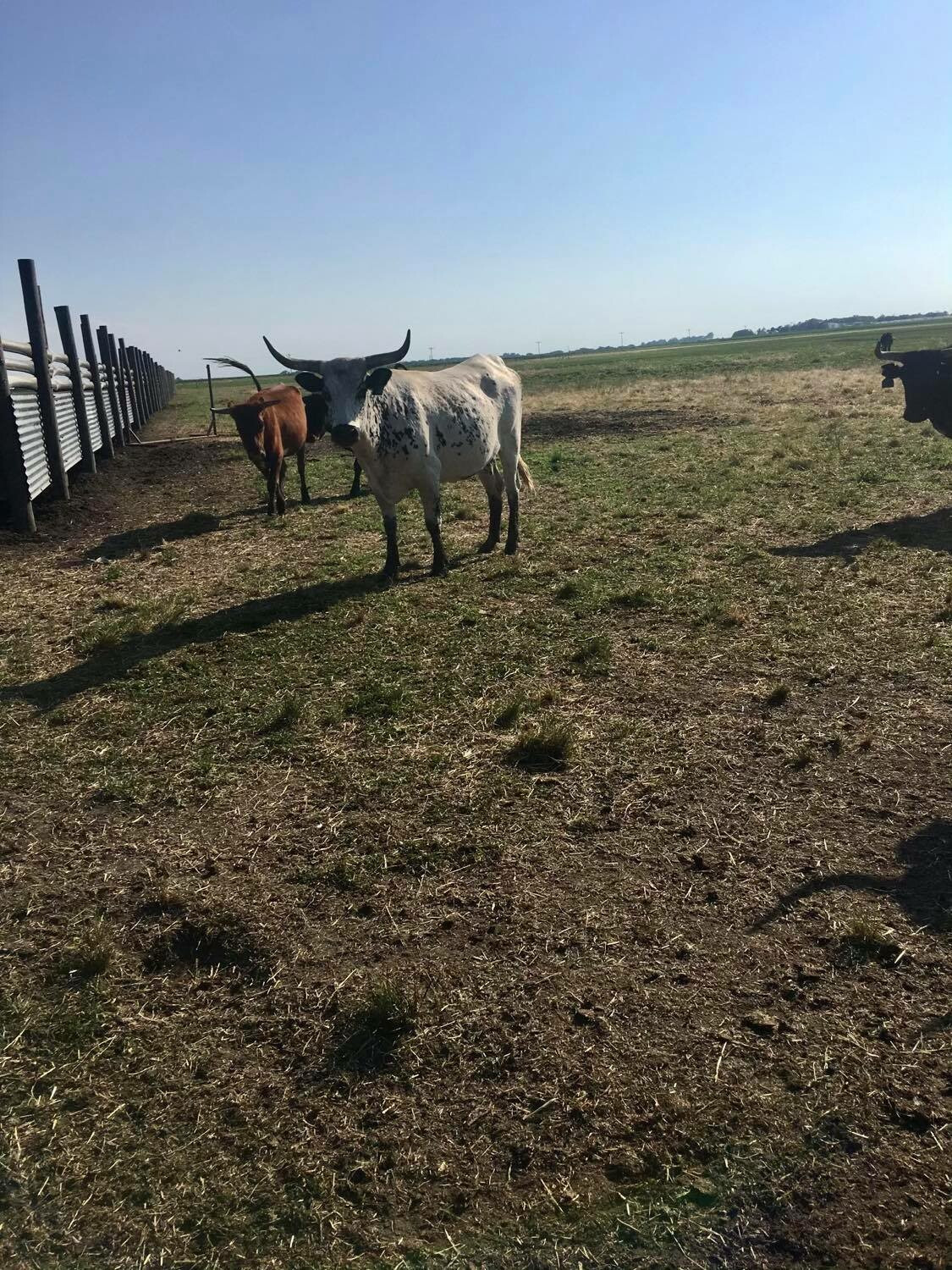
This post may contain affiliate links, which means that I may receive a commission if you make a purchase using these links, with NO additional cost to you.
Training livestock, cattle, sheep, pigs, goats, etc., for basic movement is actually fairly simple. There are a few things to consider keeping you safe and make the training simple for everyone.
First, safety. When working with any livestock it is best to wear closed toes shoes. The larger the animal, the more important your shoes are. When working with larger animals, like cows, you definitely want to invest in leather boots.
Next your biggest training tools. A bucket, some grain for starters, and repetition. Food is a very good motivator for animals. You will have to let them get their head in the bucket at least the first time, or pour the grain out for them, until they figure out the bucket means food. Once they make the connections, you can lead them about anywhere. You can also use a few rocks in a bucket in a pinch once they figure it out. Disclaimer this method works well with small groups. You get large groups of 20+ and it’s not the best method.
You can also train animals to move easily from pasture to pasture. Repetition is key here. The reward, food, is on the next side of the gate. When you move a large herd the same way every time, they quickly figure out what the ques are and often meet you at the gate.
Story time. Before I was at home with my kids, I worked with large herds of cattle, 100 was a small a group typically. Most of the time moving the group to the next pasture across the fence would be done with 1 person. We all moved them the same, with the same pattern, and call. When calves were in the group, we drove through the herd, from the gate, and made sure everyone was up. Hooked up the salt/mineral sled and slowly drove back through the herd calling for them. They quickly followed, knowing new grass was coming. By weaning even, the calves would come to a simple call, because they had been conditioned that new food was coming.
In summary, repetition is key when training animals. Their easy reward is food. Whatever you choose to use as your moving method, do it the same every time and they will quickly be moving without much effort.
As I've grown in my journey as an entrepreneur, mom, gardener, and livestock owner, I struggled to find a planner that met my needs and kept me organized. So I MADE MY OWN. You can take a look at it on the link blow and buy it on amazon below
Don't want the whole calendar part? I got you! I pulled the gardening and animal care pages out and put them in a book all their own.
Wanting a community to lean into? Join the FREE Helping Your Family Homestead for Food group! This community is for the Mommas, looking to stay home and raise their kids, but unsure how to keep everyone fed and make ends meet. I share tips from my journey from the office, to half the income and feeding my family from home, while maintaining good nourishing food. Tips include: gardening, bulk buying, caning,/preserving, livestock, homesteading, and home remedies. Your family is precious and this group is to help you gain the knowledge and tools to keep your family well and not reliant on outside professionals. Remedies and tips are easy and simple for the busy momma, time is precious after all, including pregnancy, birth, young kids, and illness. Trust your Momma gut again! This community offers the resources + community you need to help get started on your journey and prepare for whatever future you envision.
Starting to garden doesn't have to be hard! I gathered all the tips I've learned over my gardening learning curve and made them into a simple course to jump start your gardening your life.
Supporting Your Family Naturally From the Inside Out community!! This community is for the Mommas, looking to Support Your Family from Nature for Wellness. Tips range from nutrition, herbals, detoxing, natural cleaning, and essential oils. Basically all the things I’ve learned slowly over the past 5+ years if my journey. We have moved off Facebook, so to better serve our community and be able to discuss openly option for providing for your family in the best way possible.
Join the FREE Community
Join the FREE Community
I've had 3 very different pregnancies. After the first traumatic birth, I learned better and how to care for my body naturally and prevent common pregnancy and birth problems before they arise. This quick course will get you the tools you need to have a naturally healthy pregnancy, labor, and delivery. My first pregnancy I had a normal western medicine all the things pregnancy. My second? I flipped to completely natural, no medicine. Bonus: Preventing Preeclampsia Without the Aspirin & Healing from Birth Trauma
Click here to get the stories straight to your email:
For more on wellness tips click here:
For more on homesteading on your budget click here:
For more simple DIY updates click here:

This post may contain affiliate links, which means that I may receive a commission if you make a purchase using these links, with NO additional cost to you.
The basics of a pen is to contain animals to a specific area for management or safety. This can give you a lot of freedom to design with resources you have to meet your and your animals’ needs. There are a few design differences to keep in mind for horses, cattle, and sheep/goats.
If you have access to a power source (solar, battery, plug in), electric fence can be an option for most livestock. Horses and cows will respect a single strand hot wire, calves will need a second or third. Sheep will need 4 wires, with 2 hot. Electric fence also gives you the flexibility of easily moving or rotating pastures. Keep in mind, if the fence goes dead, animals have an amazing ability to know when it’s no longer on and will let themselves out. Electric fence is a great option for open grazing space. It does not work well for close corridors/high pressure areas.
For sheep, cattle panels work well. I have tried woven wire before, and it just doesn’t hold up to ewes trying to climb the fence and heads get caught too easily in the squares. Hog panels may work for sort breeds, but most of the time they are too short, and the sheep will jump out. Keep in mind for sheep you need some kind of predator deterrent or protection. The cattle panels are tall enough to deter many predators looking for an easy meal, but a determined one will search for openings. That is where a livestock guardian animal (dog, donkey, llama, etc.) comes in.
For horses in a confined area, cattle panels will work for the short term, but they will start to reach over and bend the panels if there isn’t something sturdier. You can put an electric wire across the top to keep them from leaning on the fence. Across the front of my fence, I have 4 rails of 2x6 boards. This is a very sturdy fence, but it has the hay and feed on the other side, so a sturdy fence is needed there. The other 3 sides are 4 strand smooth wire, with 2 hot. This gives me the ability for bottle calves to run there if needed.
Cattle in high pressure areas need something even sturdier. If you are only running a few head, you could get by with a simple cattle panel pen. If you are raising and moving many cattle through a chute system, you will need strong fencing, pipe is the most common as it can handle the pressure of large herds pushing on it while moving along.
Your fencing needs will depend on how much pressure your fence is under. The more pressure, the sturdier your fence will need to be. Increase pressure comes from an increase in the number of animals or a decrease in total space or a combination. Keep in mind the goal and function of your fence (open grazing or protecting from extra feed). Then take your needs, space available, with the my tips and start designing!
As I've grown in my journey as an entrepreneur, mom, gardener, and livestock owner, I struggled to find a planner that met my needs and kept me organized. So I MADE MY OWN. You can take a look at it on the link blow and buy it on amazon below
Don't want the whole calendar part? I got you! I pulled the gardening and animal care pages out and put them in a book all their own.
Wanting a community to lean into? Join the FREE Helping Your Family Homestead for Food group! This community is for the Mommas, looking to stay home and raise their kids, but unsure how to keep everyone fed and make ends meet. I share tips from my journey from the office, to half the income and feeding my family from home, while maintaining good nourishing food. Tips include: gardening, bulk buying, caning,/preserving, livestock, homesteading, and home remedies. Your family is precious and this group is to help you gain the knowledge and tools to keep your family well and not reliant on outside professionals. Remedies and tips are easy and simple for the busy momma, time is precious after all, including pregnancy, birth, young kids, and illness. Trust your Momma gut again! This community offers the resources + community you need to help get started on your journey and prepare for whatever future you envision.
Starting to garden doesn't have to be hard! I gathered all the tips I've learned over my gardening learning curve and made them into a simple course to jump start your gardening your life.
Supporting Your Family Naturally From the Inside Out community!! This community is for the Mommas, looking to Support Your Family from Nature for Wellness. Tips range from nutrition, herbals, detoxing, natural cleaning, and essential oils. Basically all the things I’ve learned slowly over the past 5+ years if my journey. We have moved off Facebook, so to better serve our community and be able to discuss openly option for providing for your family in the best way possible.
Join the FREE Community
Join the FREE Community
I've had 3 very different pregnancies. After the first traumatic birth, I learned better and how to care for my body naturally and prevent common pregnancy and birth problems before they arise. This quick course will get you the tools you need to have a naturally healthy pregnancy, labor, and delivery. My first pregnancy I had a normal western medicine all the things pregnancy. My second? I flipped to completely natural, no medicine. Bonus: Preventing Preeclampsia Without the Aspirin & Healing from Birth Trauma
Click here to get the stories straight to your email:
For more on wellness tips click here:
For more on homesteading on your budget click here:
For more simple DIY updates click here:
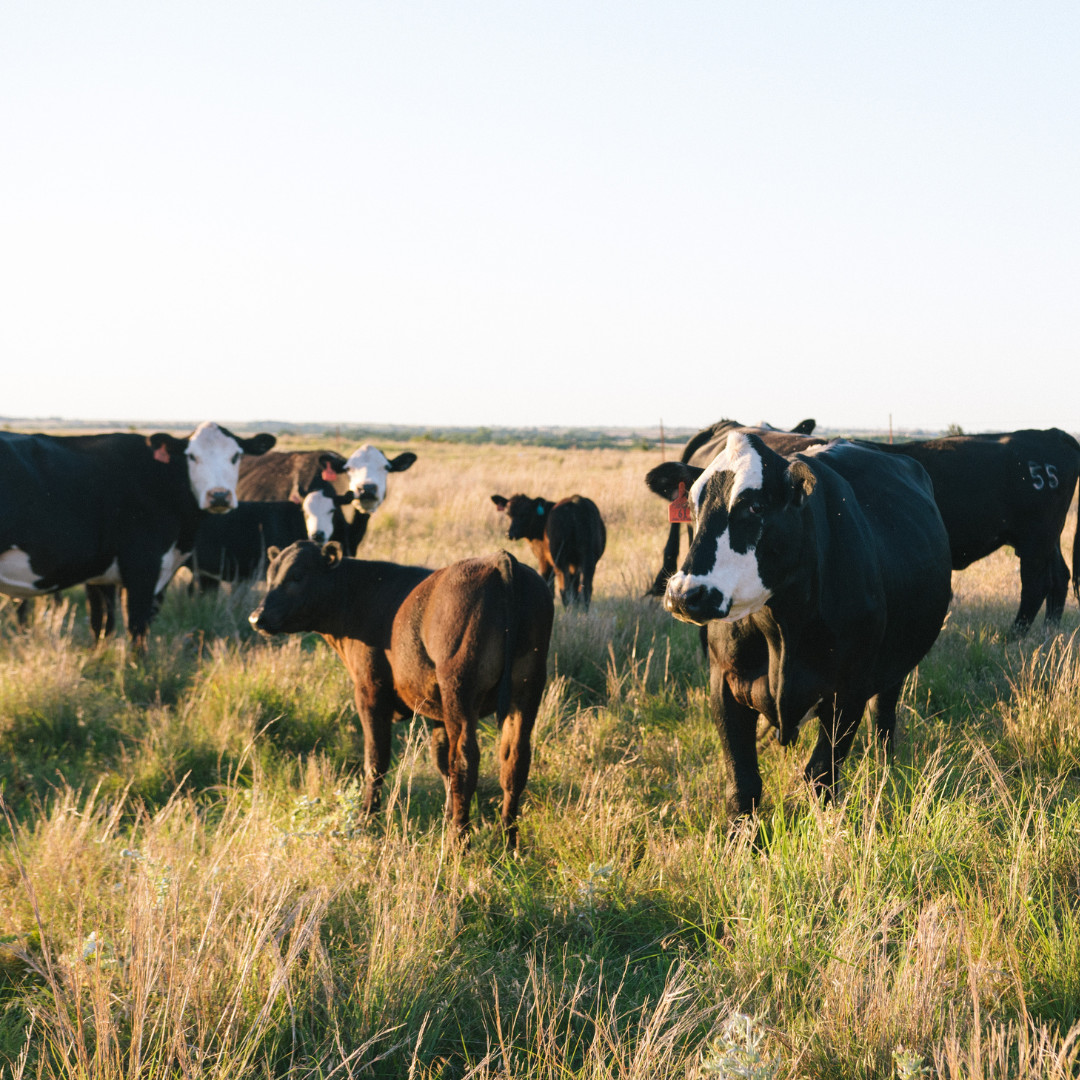
This post may contain affiliate links, which means that I may receive a commission if you make a purchase using these links, with NO additional cost to you.
I’m going to be specific on this blog to beef cows and feeding for fattening. There is a difference in feeding beef/fattening cattle and dairy cows. This is another topic I’m going to try to not get into to much science details. I’ve had a lot of school and life experience feeding cattle.
If you are a beginner homesteader raising beef cows, it's essential to know how to feed them correctly. Unlike dairy cows, feeding beef cows is less complicated, but it still requires a bit of science, especially when you don't have access to year-round pasture grass. Feeding cows lacks year-round grazing is possible, provided you adhere to some essential nutritional requirements. The secret lies in providing the necessary macro and micro-nutrients to your cows, including proper protein supplements, minerals, and vitamins. Many micro-nutrients can be made by bacteria in the rumen of the cow. In this post, we will focus on the basics of feeding in the lack of year-round pasture access, aimed specifically at beginner homesteaders.
1. Start with Forage
Forage is the foundation of a cow's diet, even when you don't have access to pasture. Dry hay, silage, and other types of roughage are great sources of forage to replace pasture grass. It is imperative to ensure that the forage you choose contains the essential minerals and protein requirements. Generally, good quality forage will contain more than 50% proportion of total intake. Ensure that you provide adequate amounts of forage for your cows, depending on their weight and body condition score.
2. Add Supplements to meet Deficiencies
Cows require specific supplements, such as protein and minerals, to meet their nutritional needs. During the winter season, beef cows may need more energy and protein, especially for pregnant or lactating cows. You can supplement your cows' diet with alfalfa, soybean meal or cottonseed meal, but you need to ensure that you do not exceed the recommended dosage. Make sure that the supplements you choose provide the correct amounts of nutrients to meet your cows' protein and energy requirements. Cattle being fed for beef/fattening will require more energy and protein, than a cow in reproduction stage of her life.
3. Offer Salt and Mineral Lick Blocks
Minerals and vitamins are micronutrients that are essential for the growth and development of beef cows. They are needed in small amounts but are crucial for proper bodily functions. There are two types of minerals – macrominerals and microminerals. Macrominerals such as Potassium, Calcium, and Magnesium are needed in larger quantities, while microminerals such as Zinc, Copper, and Manganese are only needed in small quantities. These nutrients can be provided in the form of salt mineral supplements, which should be available to cows at all times.
4. Provide Water
Water is essential for cows as their bodies require it for various functions, such as digestion, metabolism and temperature control. During the winter season, cows may drink less water, but you need to ensure that they have access to clean water regularly. Generally, cows consume around 1-3 gallons of water for every 100 pounds of their weight.
5. Optimize Feeding Practices
To efficiently feed your beef cows without year-round pasture access, it's essential to optimize your feeding practices. You can feed your cows using a total mixed ration (TMR), in which all the ingredients are combined to meet their nutritional requirements. Additionally, you can feed your cows using a ration balancer that contains a combination of essential vitamins and minerals to supplement their diet.
Feeding beef cows isn’t rocket science, but it’s not quite as simple as feeding them some hay and grains. The key to ensuring the health and productivity of beef cows is providing a balanced diet that meets their nutritional needs, including proteins, minerals, and vitamins. Additionally, feeding them should be adjusted depending on the season and the needs of the cow's life stage. While grazing year-round is the easiest option, when that is not possible, supplements like soybean meal and mineral supplements can help meet their dietary needs. Understanding these basics can make a significant difference in your beef cow farming, and even beginner homesteaders can provide their cows with proper nutrition by using the tips outlined in this post. If you are wanting more information on specifics, join my free group for beginner homesteaders linked below. I go into way more detail there.
As I've grown in my journey as an entrepreneur, mom, gardener, and livestock owner, I struggled to find a planner that met my needs and kept me organized. So, I MADE MY OWN. You can take a look at it on the link blow and buy it on amazon below:
Don't want the whole calendar part? I got you! I pulled the gardening and animal care pages out and put them in a book all their own.
Wanting a community to lean into? Join the FREE Helping Your Family Homestead for Food group! This community is for the Mommas, looking to stay home and raise their kids, but unsure how to keep everyone fed and make ends meet. I share tips from my journey from the office, to half the income and feeding my family from home, while maintaining good nourishing food. Tips include: gardening, bulk buying, caning,/preserving, livestock, homesteading, and home remedies. Your family is precious and this group is to help you gain the knowledge and tools to keep your family well and not reliant on outside professionals. Remedies and tips are easy and simple for the busy momma, time is precious after all, including pregnancy, birth, young kids, and illness. Trust your Momma gut again! This community offers the resources + community you need to help get started on your journey and prepare for whatever future you envision.
Starting to garden doesn't have to be hard! I gathered all the tips I've learned over my gardening learning curve and made them into a simple course to jump start your gardening your life.
Supporting Your Family Naturally From the Inside Out community!! This community is for the Mommas, looking to Support Your Family from Nature for Wellness. Tips range from nutrition, herbals, detoxing, natural cleaning, and essential oils. Basically all the things I’ve learned slowly over the past 5+ years if my journey. We have moved off Facebook, so to better serve our community and be able to discuss openly option for providing for your family in the best way possible.
Join the FREE Community
Join the FREE Community
I've had 3 very different pregnancies. After the first traumatic birth, I learned better and how to care for my body naturally and prevent common pregnancy and birth problems before they arise. This quick course will get you the tools you need to have a naturally healthy pregnancy, labor, and delivery. My first pregnancy I had a normal western medicine all the things pregnancy. My second? I flipped to completely natural, no medicine. Bonus: Preventing Preeclampsia Without the Aspirin & Healing from Birth Trauma
Click here to get the stories straight to your email:
For more on wellness tips click here:
For more on homesteading on your budget click here:
For more simple DIY updates click here:
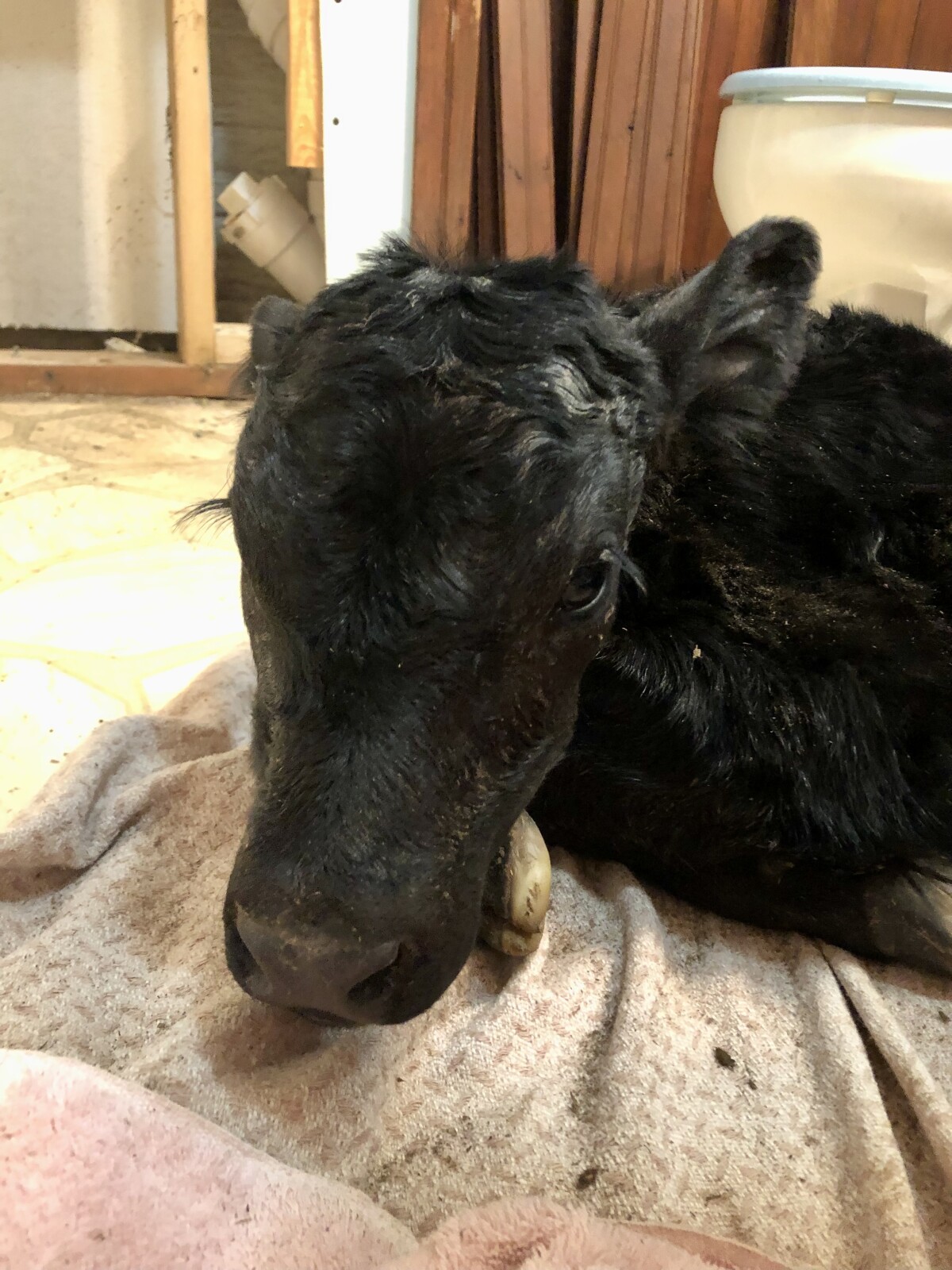
This post may contain affiliate links, which means that I may receive a commission if you make a purchase using these links, with NO additional cost to you.
If you’re a homesteader, chances are you may have thought of raising your own bottle calves. Bottle calves are just like any other animal—they need food, shelter, and care. In this article, we’ll go over all the basics you need to know when caring for a bottle calf. From getting them settled in their new home to what they should eat as they grow up, we’ve got you covered!
Shelter and Supplies
When it comes to shelter, all the calf needs is a small space that is both dry and draft-free. Depending on how large your calf will be at full size, you can either purchase or build a small structure that meets these criteria. The structure should provide enough room for the calf to stand up and turn around in. In addition to shelter, you will also need a calf bottle, with nipple, and milk replacer (by weight). You can find milk replacer at most feed stores. Calf milk replacer is specially formulated to give them all of the nutrition they need to grow healthy and strong.
If you've brought in a cold calf from outside, it's important to warm them up as quickly as possible. It's best if you have an old quilt or blanket handy that can be used as an insulator. A hair dryer is also helpful for warming them up quickly—just make sure not to get too close with the hair dryer! Once warmed up and fed, the calf should settle right into its new home in no time. If you are having problems getting a calf to nurse, check out the post on Getting the Stubborn Ones to Nurse.
As They Grow
Once your bottle calves get older, they'll need more than just milk replacer—they also need hay or alfalfa (grass hay works best) and creep feed. Creep feed is typically a pellet and is specially formulated for younger animals like calves who aren't quite ready for regular feed yet. You'll want to introduce creep feed gradually so your calf has time to adjust before it starts consuming it fully. In addition, always make sure there’s plenty of fresh water available for your calves!
Caring for bottle calves is an incredibly rewarding experience when done correctly; however, there are several supplies needed to ensure their health and wellbeing. Shelters are essential for keeping them safe from predators and harsh weather conditions while bottles, milk replacer, hay and grains provide them with all the nutrients they need for strong physical development. Finally, old blankets and hair dryers can be used to warm any cold or weak calves that may come in so that they can thrive on your homestead!
As I've grown in my journey as an entrepreneur, mom, gardener, and livestock owner, I struggled to find a planner that met my needs and kept me organized. So I MADE MY OWN. You can take a look at it on the link blow and buy it on amazon below
Don't want the whole calendar part? I got you! I pulled the gardening and animal care pages out and put them in a book all their own.
Wanting a community to lean into? Join the FREE Helping Your Family Homestead for Food group! This community is for the Mommas, looking to stay home and raise their kids, but unsure how to keep everyone fed and make ends meet. I share tips from my journey from the office, to half the income and feeding my family from home, while maintaining good nourishing food. Tips include: gardening, bulk buying, caning,/preserving, livestock, homesteading, and home remedies. Your family is precious and this group is to help you gain the knowledge and tools to keep your family well and not reliant on outside professionals. Remedies and tips are easy and simple for the busy momma, time is precious after all, including pregnancy, birth, young kids, and illness. Trust your Momma gut again! This community offers the resources + community you need to help get started on your journey and prepare for whatever future you envision.
Starting to garden doesn't have to be hard! I gathered all the tips I've learned over my gardening learning curve and made them into a simple course to jump start your gardening your life.
Supporting Your Family Naturally From the Inside Out community!! This community is for the Mommas, looking to Support Your Family from Nature for Wellness. Tips range from nutrition, herbals, detoxing, natural cleaning, and essential oils. Basically all the things I’ve learned slowly over the past 5+ years if my journey. We have moved off Facebook, so to better serve our community and be able to discuss openly option for providing for your family in the best way possible.
Join the FREE Community
Join the FREE Community
I've had 3 very different pregnancies. After the first traumatic birth, I learned better and how to care for my body naturally and prevent common pregnancy and birth problems before they arise. This quick course will get you the tools you need to have a naturally healthy pregnancy, labor, and delivery. My first pregnancy I had a normal western medicine all the things pregnancy. My second? I flipped to completely natural, no medicine. Bonus: Preventing Preeclampsia Without the Aspirin & Healing from Birth Trauma
Click here to get the stories straight to your email:
For more on wellness tips click here:
For more on homesteading on your budget click here:
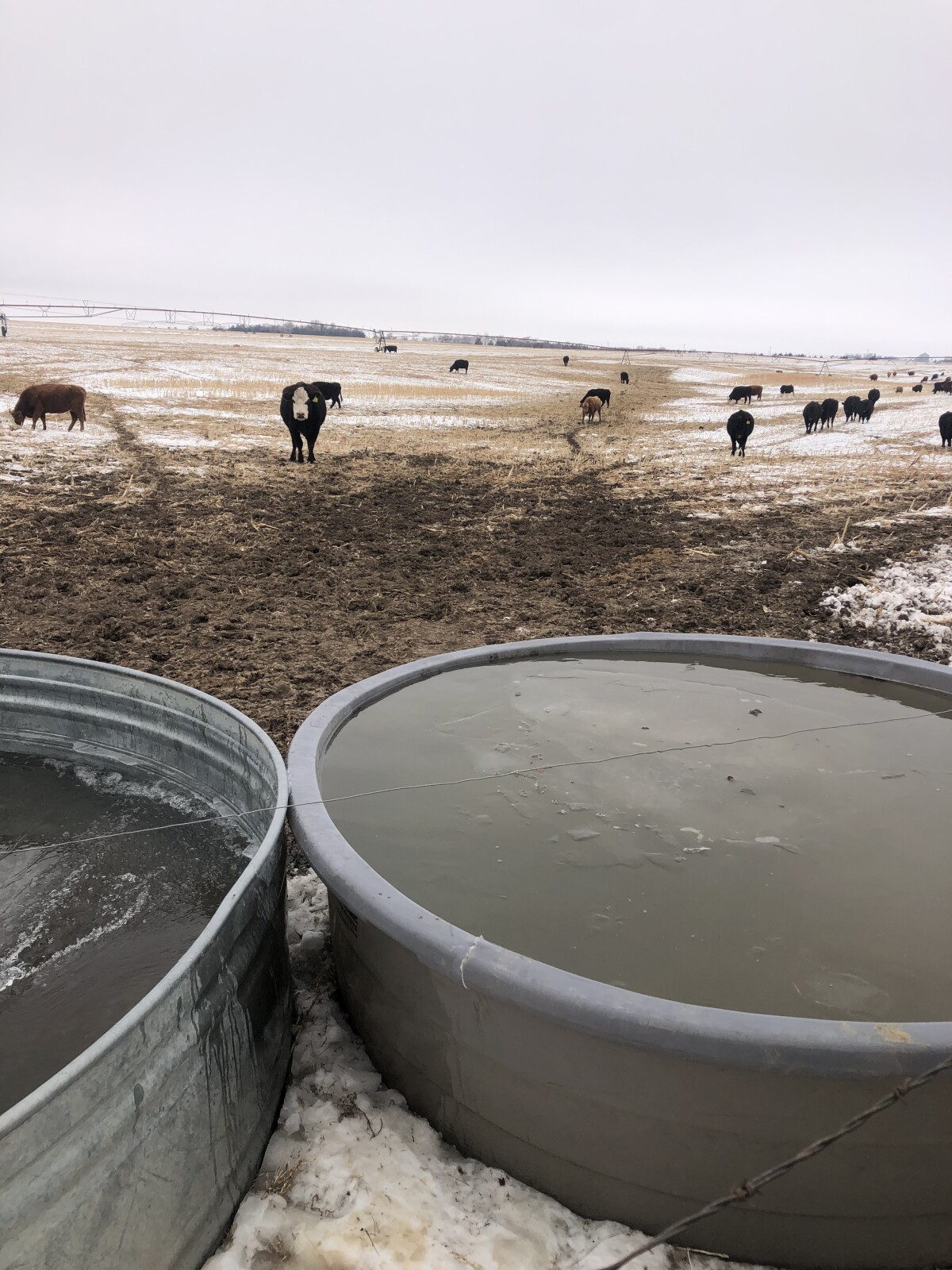
This post may contain affiliate links, which means that I may receive a commission if you make a purchase using these links, with NO additional cost to you.
Have you ever wanted to raise your own beef? It can be a rewarding experience. But before you dive into the world of cattle raising, it's important to know the basics of what's required and which breed of cattle is best for your needs. There are two distinctly different breed groupings of cattle—dairy (jersey, Holstein) and beef (angus, Herford)—so it’s important to understand the differences between them before making any decisions. In this blog, we will discuss why a beef cow is the best choice if you are wanting strictly beef and not milk, as well as what kind of resources you will need to successfully raise beef cattle on your homestead.
Why Choose a Beef Cow?
When selecting a breed of cattle for beef production, there are two main categories to consider - dairy and beef. While some dairy breeds can be used for beef production, if your goal is strictly to produce beef, you'll want to opt for a purebred beef breed. A family milk cow is called the Queen for a reason, and should be treated as such. Beef breeds will typically have larger frames than their dairy counterparts and can reach market weight faster with less feed. Furthermore, they can thrive in nearly any climate and environment, meaning that they can be raised in both cold and hot climates alike with minimal hassle.
Feed and Water
The next step is deciding how you'd like to finish the animal - either through grass or grain finishing. If grass finishing is your route of choice, you'll need direct access to plenty of pastureland (1 to 10 acres per steer depending on climate) or high quality hay (such as alfalfa). Grain finishing requires grain (typically corn), hay (for gut health). More on specific feeding strategies later. Regardless of which method you choose, keep in mind that while steers are usually used for beef production, heifers may also be suitable provided they don't reach maturity and become bred cows.
A clean water source will be needed as well. Typically, this is a stock tank. The tank needs to be big enough to hold 25-30 gallons of water per head per day, at the end of the finishing phase. It can also be 3 feet tall even for calves.
Raising beef cattle on your homestead can be an incredibly rewarding experience—not only does it provide delicious meat for your family, but it also gives you an opportunity to learn more about animal husbandry while connecting with nature at the same time. If this sounds like something that interests you, then make sure to research all the necessary requirements first before taking the plunge! With the right resources on hand and some dedication, there’s no reason why raising beef cattle couldn’t succeed on your homestead!
As I've grown in my journey as an entrepreneur, mom, gardener, and livestock owner, I struggled to find a planner that met my needs and kept me organized. So I MADE MY OWN. You can take a look at it on the link blow and buy it on amazon below
Don't want the whole calendar part? I got you! I pulled the gardening and animal care pages out and put them in a book all their own.
Wanting a community to lean into? Join the FREE Helping Your Family Homestead for Food group! This community is for the Mommas, looking to stay home and raise their kids, but unsure how to keep everyone fed and make ends meet. I share tips from my journey from the office, to half the income and feeding my family from home, while maintaining good nourishing food. Tips include: gardening, bulk buying, caning,/preserving, livestock, homesteading, and home remedies. Your family is precious and this group is to help you gain the knowledge and tools to keep your family well and not reliant on outside professionals. Remedies and tips are easy and simple for the busy momma, time is precious after all, including pregnancy, birth, young kids, and illness. Trust your Momma gut again! This community offers the resources + community you need to help get started on your journey and prepare for whatever future you envision.
Starting to garden doesn't have to be hard! I gathered all the tips I've learned over my gardening learning curve and made them into a simple course to jump start your gardening your life.
Supporting Your Family Naturally From the Inside Out community!! This community is for the Mommas, looking to Support Your Family from Nature for Wellness. Tips range from nutrition, herbals, detoxing, natural cleaning, and essential oils. Basically all the things I’ve learned slowly over the past 5+ years if my journey. We have moved off Facebook, so to better serve our community and be able to discuss openly option for providing for your family in the best way possible.
Join the FREE Community
Join the FREE Community
I've had 3 very different pregnancies. After the first traumatic birth, I learned better and how to care for my body naturally and prevent common pregnancy and birth problems before they arise. This quick course will get you the tools you need to have a naturally healthy pregnancy, labor, and delivery. My first pregnancy I had a normal western medicine all the things pregnancy. My second? I flipped to completely natural, no medicine. Bonus: Preventing Preeclampsia Without the Aspirin & Healing from Birth Trauma
Click here to get the stories straight to your email:
For more on wellness tips click here:
For more on homesteading on your budget click here:
For more simple DIY updates click here:



